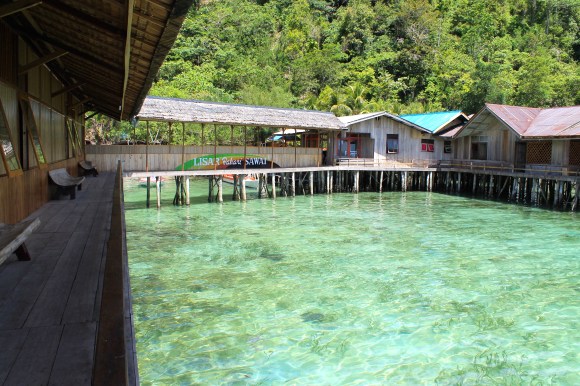
One of the great things about travel is that sometimes the best laid plans completely fall apart and then you discover something unexpected and even more amazing than the thing or place you originally intended to visit.
That was the case on a recent trip to Indonesia when our plans to go to the Banda Islands, some of the famed spice islands, fell through and instead we found ourselves sleeping above a coral reef, hanging out with sea turtles and stuffing ourselves silly on fish and spicy chollo chollo in the tiny town of Sawai.
Maluku Province, a collection of islands between Sulawesi and Papua, was once the center of the global spice trade and the European colonial powers wrestled over control of the cloves, nutmeg and mace that only grew here. Now it’s more of a sleepy backwater, supported by trade in marine and other natural resources. Despite boasting some of the richest marine biodiversity in the world and no shortage of pristine white beaches and dramatic mountainous treks, international tourism hasn’t really discovered it yet.
We arrived in the regional hub of Ambon, where we had been told we could either book passage on a weekly boat or take a short prop flight to the Bandas. However, the boat was sold out and nobody in town seemed to know if the charter flight company actually existed or where one might book a seat if it did. This sort of confusion seems to be par for the course for transportation in Maluku, where schedules change monthly if not more frequently and services are mostly provided by enterprising individuals when they feel like it.
We started searching for a plan B. A hotel manager suggested the nearby island of Seram, where one could find a tiny village called Sawai with ocean bungalows built over a coral reef. According to the hotel staff, there was a twice daily speedboat from a nearby port that would take us to the city of Masohi, where we could charter a car or take a share taxi to Sawai.
▼ Not our boat, thankfully.
When we turned up to the ferry terminal, however, it was closed. Our taxi driver had a quick conversation with a nearby vendor who apparently told him that the there was only one ferry and it has already gone. They went back and forth in Indonesian a bit and then our driver bustled us hurriedly back into the car and sped off down the road. He didn’t speak much English, so we didn’t really know what was happening, but we gathered he had another plan.
We skidded into the parking lot at another port, where a slow ferry was just getting ready to depart. The driver hailed them to wait, helped us buy our 15,000 rupiah tickets (about US$1.10) and jogged us and our bags onto the boat, before jumping off and waving from the shore as the boat pulled away. We were on our way! Unfortunately, we had no idea where to.
It turned out to be Waipirit, a town on Seram about four hours’ drive west of Masohi. According to a friendly local who translated between us and the touts waiting harbor-side, chartering a car directly to Sawai would take about eight hours and 1,500,000 rupiah (US$110), so we opted for a share taxi to Masohi at 90,000 rupiah each. This was an experience in and of itself, packed like sardines into a flame-red minibus with the side door left open as we zigzagged along a coastal road in various states of repair.
▼ I called it Red Lightning.
It was already after dark by the time we got to Masohi, so we decided to find a place to crash near the bus terminal and find our way to Sawai in the morning. By gesturing sleeping to some of our fellow passengers, we got directed to a small inn across the street and scored a room with a mattress on the floor and a toilet for 100,000 rupiah ($7.40), split three ways. It wasn’t much, but the family that ran the place was so friendly and so excited to have foreign visitors that we ended up hanging out with them in the office/living room for a good part of the night, while their teenage daughter attempted with some hilarity to translate between us.
▼ Hey, it also had a TV!
The family also advised us that we might sit all day at the bus terminal waiting for a share taxi to Sawai to fill up because there wasn’t much demand. One option was to head for Wahai, a slightly larger town a bit further on, then get out at the turnoff to Sawai and walk the remaining 5km. The other was to hire a car. They knew a guy going that way the next morning and got him to take us for 600,000 rupiah (US$44.37), just a bit more than the 450,000 rupiah it would have cost all three of us to take the share taxi.
Bright and early the next morning, some guy showed up with a car. The family was all still asleep, so we took his word that he was there to give us a ride and not some crazy ax murder and hopped in. It turned out that he was actually a nurse at the hospital in Masohi and was returning to his home village for his days off.
The drive from Masohi to Sawai goes directly across the island, over a forested mountain nature preserve. It takes about four hours, perhaps more if the roads are bad or it’s dark, but it’s a lovely drive.
▼Most of the road is barely wide enough for two vehicles to pass.
▼ The view from the mountain towards Sawai.
Our driver dropped us just outside of the village, as the streets are too narrow for a car. We didn’t really know where we were going, so we just started walking. The houses in Sawai were small and close together, but painted in bright, cheerful colors with fluttering bunting strung between them. Cloves were laid out to dry in the sun in every available space, including the walkways, filling the air with their spicy scent and making us hopscotch a bit to get by. So small is it, that before we had gone more that a few meters in search of the ocean bungalows, the manager came and found us.
▼Bustling downtown Sawai
▼ Sawai from the ocean side
At long last, we had reached our destination, the Lisar Bahari Guesthouse! Happily, they had rooms available at just 300,000 rupiah a night per person with full board, and they were, as we had been told, right over a reef.
▼ Lisar Bahari central “courtyard”
▼ Our neighbors
▼ The view from our porch
Granted, in comparison with the famous bungalows of the Maldives, accommodation here is basic. Rather than a private bungalow, you get a room in a hall with either two single beds or a double. It also has a simple shower and toilet, which draws water from a local spring. Sometimes, when a lot of people are showering, the reservoir runs dry and you have to wait until it fills up again. The rooms are open at the top to provide ventilation, so you can hear your neighbors loud and clear and sometimes the local wildlife pops in for a visit (Hello, Mr. Spider!).
▼ Communal dining area
▼Bedroom
▼Bathroom
▼Hallway
▼ There are several buildings with a small boat jetty in the middle. You can also swim from there.
▼And a sea turtle comes every evening to hang out for a bit!
With the exception of breakfast, which was usually just some bread and fruit, the meals were delicious, plentiful and full of local flavor. Often the fish you would be admiring while snorkeling would turn up later on your plate, which was a little weird, but also nice in terms of freshness and authenticity. Tea, coffee and fresh water were available throughout the day at the dining area, and the staff would bring a snack every day around 4pm too.
▼ Dinner. The sauce in the middle is chollo chollo, a regional condiment made with peppers and green tomatoes. You spoon it over your fish and rice and it is spicy, acidic and amazing.
During the day, you have the option of taking tours around to good snorkeling sites, uninhabited islands, beaches and other local sites. In the season, you can also arrange scuba trips. And with a little planning, you can do overnight trips into the nature preserve in the mountains, where they hoist you up onto platforms in the canopy to birdwatch. Or you can hang out at the guesthouse too, just soaking up the rays or reading a book outside.
Snorkeling and scuba diving are the main attractions, though. Our guides took us to a variety of different sites, some at the foot of huge cliffs and featuring dramatic drop offs, others rising out of the sea beyond the confines of the bay and stretching for what seemed like kilometers. The diversity of corals and other sea life was impressive.
▼ A reef a short boat ride away. Here, the water was barely deep enough for our boat to pass over.
▼ A deserted island where the guides brought us for lunch, roasting fish they’d caught at the reef on a bed of coals.
▼ A platform in the bay where we stopped for a cup of coffee!
▼ A coral beach on another island
When people talk about getting away from it all, this is the kind of idyll they are imagining. No internet, no traffic, no stress—just you, the ocean and days upon days where time is measured only in the movement of the sun. And after the challenges of actually getting there, you’re going to need that relaxation!
Photos © RocketNews24

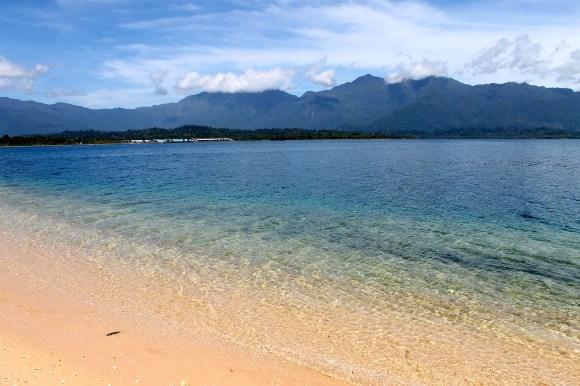
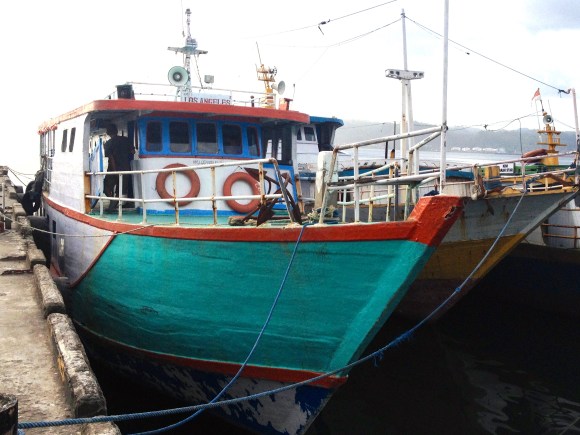
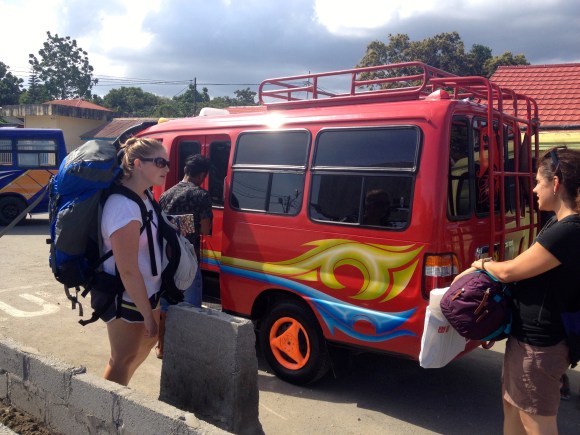


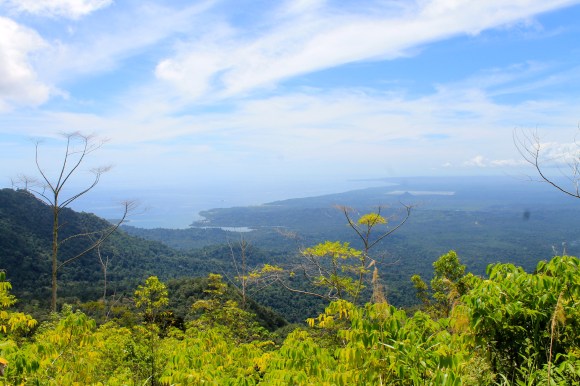
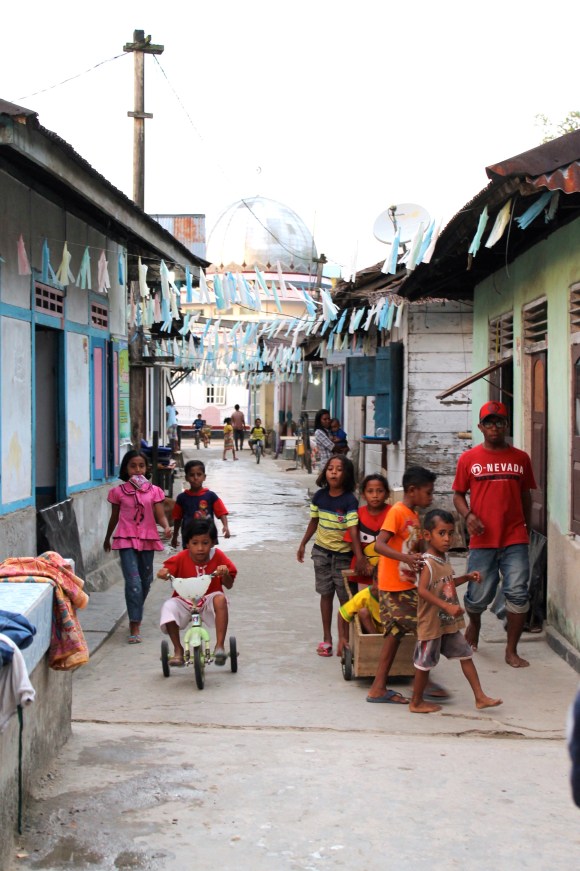
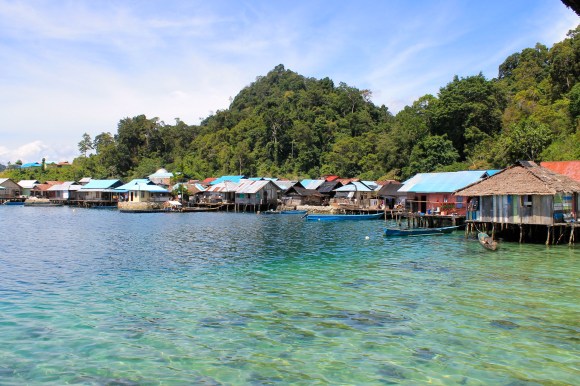
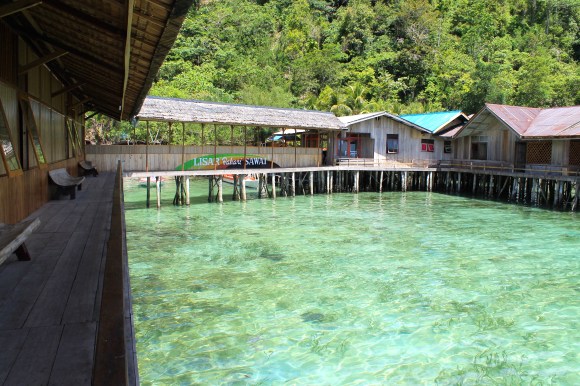
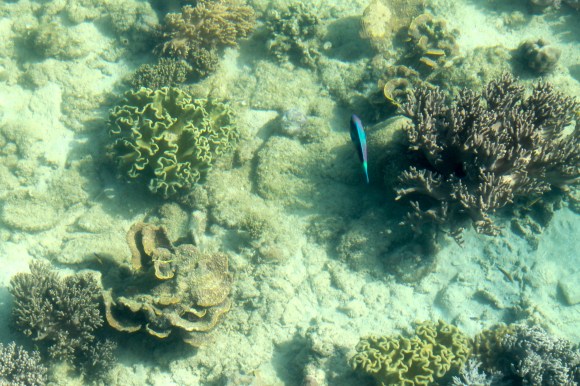
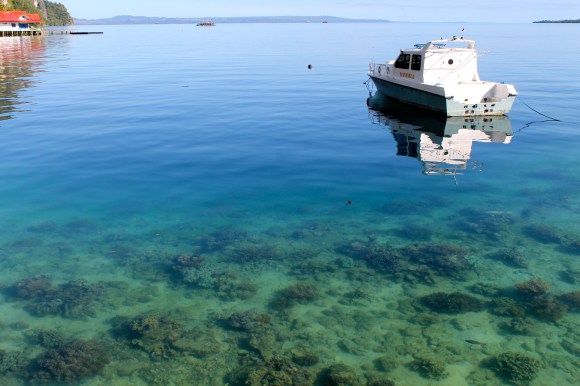
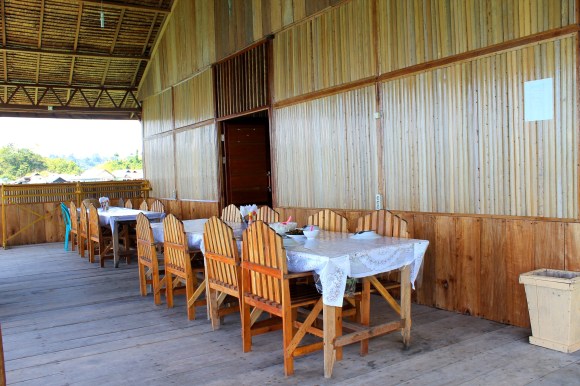
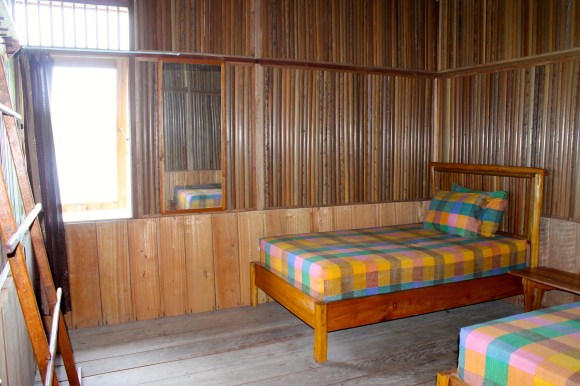
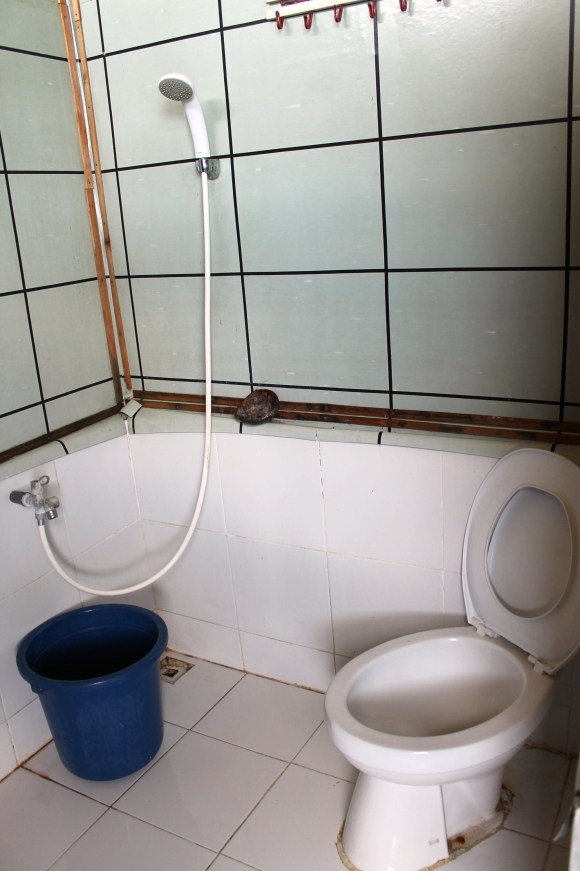
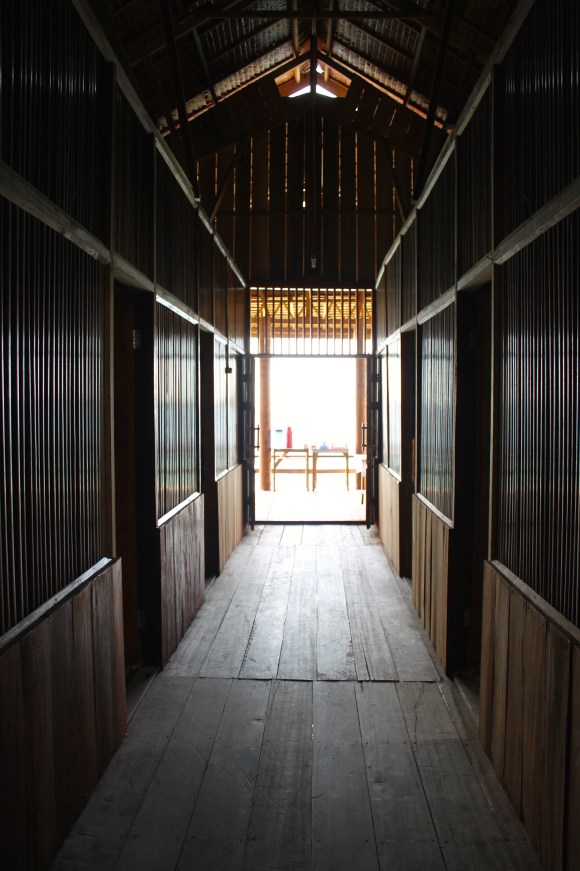
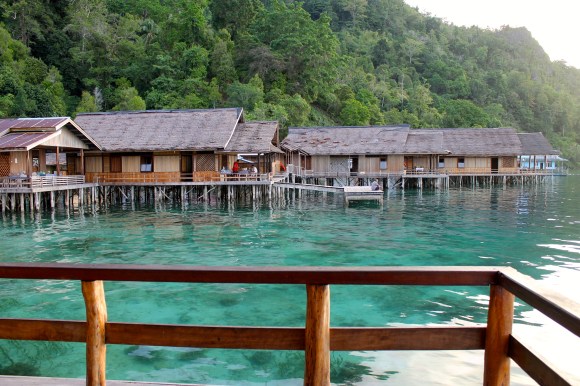
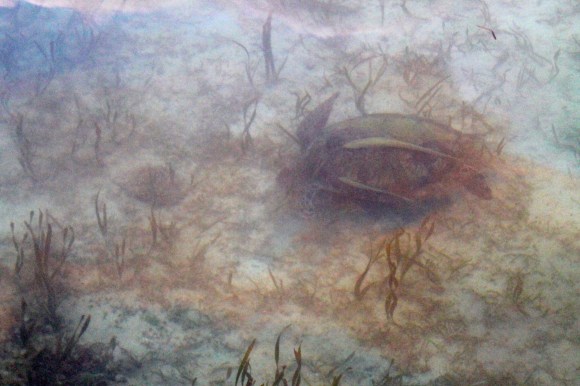
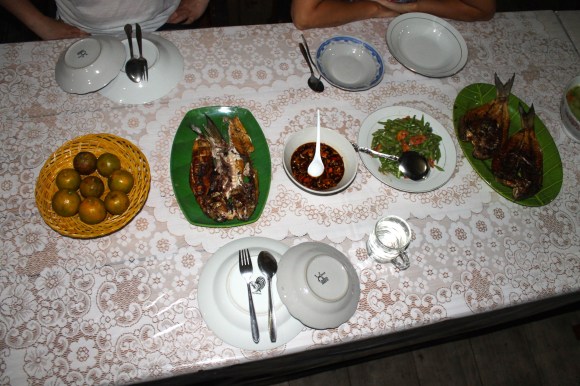
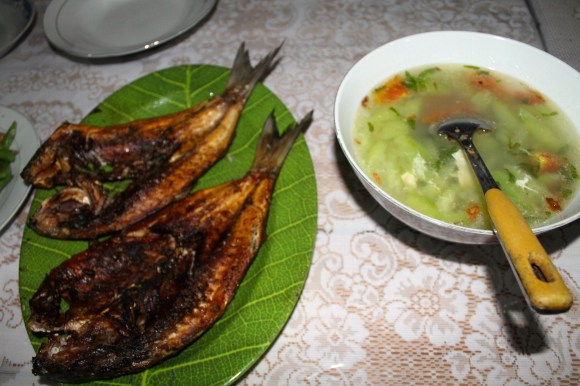
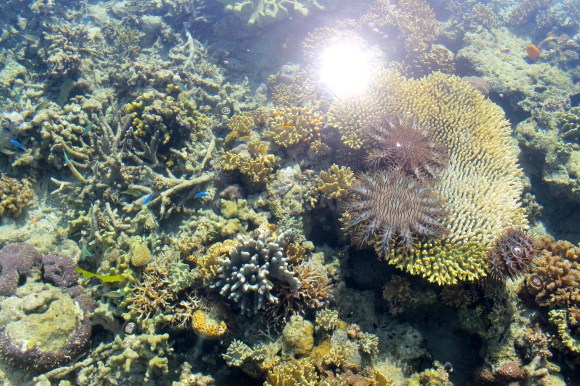
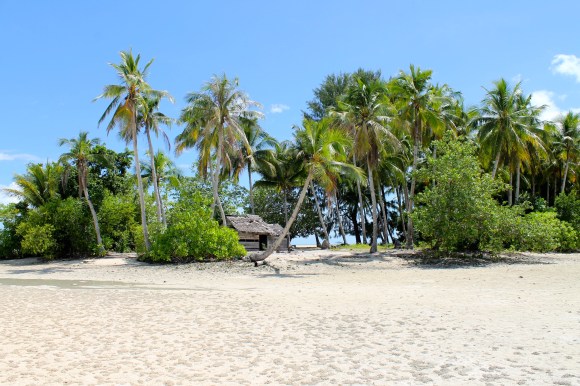
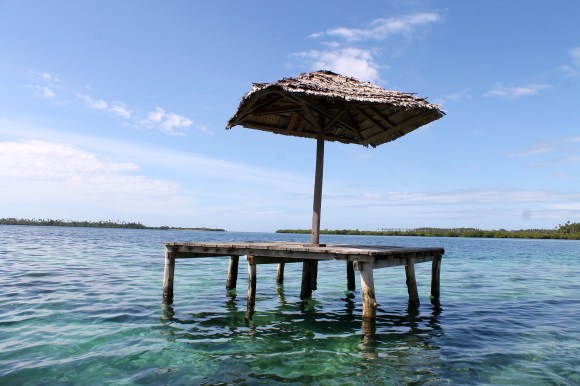
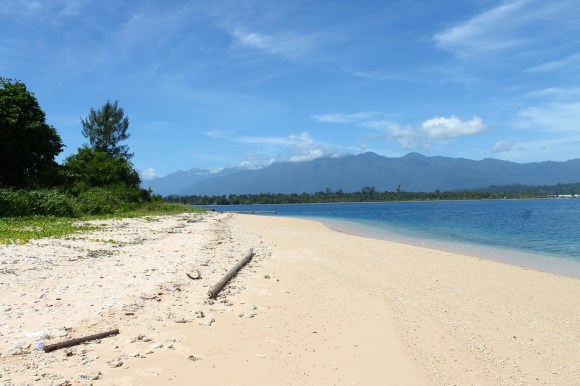
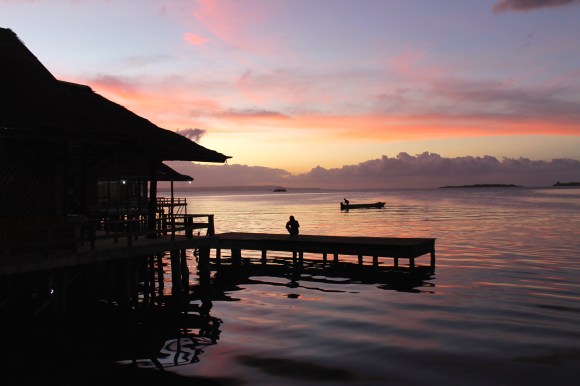
 Take it from a local: This resort island off the coast of Nagasaki is totally worth a side trip
Take it from a local: This resort island off the coast of Nagasaki is totally worth a side trip Better than mosquito repellent – The most eco-friendly (and spiritual) way to repel pests in Japan
Better than mosquito repellent – The most eco-friendly (and spiritual) way to repel pests in Japan Japan’s secret garbage problem–and what you can do to help
Japan’s secret garbage problem–and what you can do to help “Hey, Japanese taxi driver, take us to the best Yaeyama soba noodles on Ishigaki Island!”
“Hey, Japanese taxi driver, take us to the best Yaeyama soba noodles on Ishigaki Island!” We try super rare Shizuoka food souvenirs in the form of blue gelato and purple baumkuchen
We try super rare Shizuoka food souvenirs in the form of blue gelato and purple baumkuchen Japanese ramen restaurants under pressure from new yen banknotes
Japanese ramen restaurants under pressure from new yen banknotes McDonald’s new Happy Meals offer up cute and practical Sanrio lifestyle goods
McDonald’s new Happy Meals offer up cute and practical Sanrio lifestyle goods New private rooms on Tokaido Shinkansen change the way we travel from Tokyo to Kyoto
New private rooms on Tokaido Shinkansen change the way we travel from Tokyo to Kyoto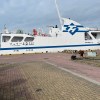 A trip to hell on Japan’s ‘vomit ship’: Is it as bad as everyone says it is?
A trip to hell on Japan’s ‘vomit ship’: Is it as bad as everyone says it is? French Fries Bread in Tokyo’s Shibuya becomes a hit on social media
French Fries Bread in Tokyo’s Shibuya becomes a hit on social media We tried Korea’s way-too-big King Tonkatsu Burger at Lotteria 【Taste Test】
We tried Korea’s way-too-big King Tonkatsu Burger at Lotteria 【Taste Test】 Sakura tree falls on man at Sannenzaka near Kiyomizu temple in Kyoto 【Breaking News】
Sakura tree falls on man at Sannenzaka near Kiyomizu temple in Kyoto 【Breaking News】 Secret Kitchen bento serves Japanese flowers, birds, wind and moon in a box, but is it worth it?
Secret Kitchen bento serves Japanese flowers, birds, wind and moon in a box, but is it worth it? Fire away your frustration at ‘404 Not Found’ — Site turns error message into classic arcade game
Fire away your frustration at ‘404 Not Found’ — Site turns error message into classic arcade game Is Japan’s massive Shizuoka steak sandwich really as delicious as it looks in promo photos?
Is Japan’s massive Shizuoka steak sandwich really as delicious as it looks in promo photos? All-you-can-drink Starbucks and amazing views part of Tokyo’s new 170 meter-high sky lounge
All-you-can-drink Starbucks and amazing views part of Tokyo’s new 170 meter-high sky lounge More foreign tourists than ever before in history visited Japan last month
More foreign tourists than ever before in history visited Japan last month Starbucks reopens at Shibuya Scramble Crossing with new look and design concept
Starbucks reopens at Shibuya Scramble Crossing with new look and design concept Disney princesses get official manga makeovers for Manga Princess Cafe opening in Tokyo
Disney princesses get official manga makeovers for Manga Princess Cafe opening in Tokyo Studio Ghibli releases new action figures featuring Nausicaä of the Valley of the Wind characters
Studio Ghibli releases new action figures featuring Nausicaä of the Valley of the Wind characters Beautiful new Final Fantasy T-shirt collection on the way from Uniqlo【Photos】
Beautiful new Final Fantasy T-shirt collection on the way from Uniqlo【Photos】 Is the new Shinkansen Train Desk ticket worth it?
Is the new Shinkansen Train Desk ticket worth it? Studio Ghibli glasses cases let anime characters keep an eye on your spectacles
Studio Ghibli glasses cases let anime characters keep an eye on your spectacles Studio Ghibli releases Kiki’s Delivery Service chocolate cake pouches in Japan
Studio Ghibli releases Kiki’s Delivery Service chocolate cake pouches in Japan New definition of “Japanese whiskey” goes into effect to prevent fakes from fooling overseas buyers
New definition of “Japanese whiskey” goes into effect to prevent fakes from fooling overseas buyers Our Japanese reporter visits Costco in the U.S., finds super American and very Japanese things
Our Japanese reporter visits Costco in the U.S., finds super American and very Japanese things Studio Ghibli unveils Mother’s Day gift set that captures the love in My Neighbour Totoro
Studio Ghibli unveils Mother’s Day gift set that captures the love in My Neighbour Totoro Domino’s Japan now sells…pizza ears?
Domino’s Japan now sells…pizza ears? New Japanese KitKat flavour stars Sanrio characters, including Hello Kitty
New Japanese KitKat flavour stars Sanrio characters, including Hello Kitty New Pokémon cakes let you eat your way through Pikachu and all the Eevee evolutions
New Pokémon cakes let you eat your way through Pikachu and all the Eevee evolutions Sales of Japan’s most convenient train ticket/shopping payment cards suspended indefinitely
Sales of Japan’s most convenient train ticket/shopping payment cards suspended indefinitely Sold-out Studio Ghibli desktop humidifiers are back so Totoro can help you through the dry season
Sold-out Studio Ghibli desktop humidifiers are back so Totoro can help you through the dry season Japanese government to make first change to romanization spelling rules since the 1950s
Japanese government to make first change to romanization spelling rules since the 1950s Ghibli founders Toshio Suzuki and Hayao Miyazaki contribute to Japanese whisky Totoro label design
Ghibli founders Toshio Suzuki and Hayao Miyazaki contribute to Japanese whisky Totoro label design Doraemon found buried at sea as scene from 1993 anime becomes real life【Photos】
Doraemon found buried at sea as scene from 1993 anime becomes real life【Photos】 Tokyo’s most famous Starbucks is closed
Tokyo’s most famous Starbucks is closed One Piece characters’ nationalities revealed, but fans have mixed opinions
One Piece characters’ nationalities revealed, but fans have mixed opinions We asked a Uniqlo employee what four things we should buy and their suggestions didn’t disappoint
We asked a Uniqlo employee what four things we should buy and their suggestions didn’t disappoint Princesses, fruits, and blacksmiths: Study reveals the 30 most unusual family names in Japan
Princesses, fruits, and blacksmiths: Study reveals the 30 most unusual family names in Japan Trying Yoshinoya for the first time in his life, is our Indonesian reporter impressed?【Taste test】
Trying Yoshinoya for the first time in his life, is our Indonesian reporter impressed?【Taste test】 “Hey, Japanese taxi driver, take us to the best seafood joint in Otaru!”
“Hey, Japanese taxi driver, take us to the best seafood joint in Otaru!” Boat believed to be debris from Japan’s 2011 tsunami drifts all the way to Washington
Boat believed to be debris from Japan’s 2011 tsunami drifts all the way to Washington The top ocean-themed anime otaku most want to cool off with this summer ranked
The top ocean-themed anime otaku most want to cool off with this summer ranked “Hey Singaporean taxi driver! Take us to the best restaurant in Singapore!”
“Hey Singaporean taxi driver! Take us to the best restaurant in Singapore!” The best cosplayers from the Isshoni Tanoshimimashou otaku event in Indonesia【Photos】
The best cosplayers from the Isshoni Tanoshimimashou otaku event in Indonesia【Photos】 Rakuten Travel reveals the top 5 best-rated, off-the-beaten-track Japanese ryokan inns
Rakuten Travel reveals the top 5 best-rated, off-the-beaten-track Japanese ryokan inns Escape the chill of winter with these dazzling seascape photos
Escape the chill of winter with these dazzling seascape photos Come camp with us on Mt. Jinbagata, the best view you can get without breaking a sweat【SoraCamp】
Come camp with us on Mt. Jinbagata, the best view you can get without breaking a sweat【SoraCamp】 The only path to this Nagasaki Shinto shrine gets swallowed by the sea every day【Video】
The only path to this Nagasaki Shinto shrine gets swallowed by the sea every day【Video】 Osaka to Fukuoka for less than 40 bucks? It’s possible with Japan’s overnight ferry
Osaka to Fukuoka for less than 40 bucks? It’s possible with Japan’s overnight ferry Hilarious chase ensues as tiny dog chases Google Street View car in Kagoshima
Hilarious chase ensues as tiny dog chases Google Street View car in Kagoshima Three bridges in Okinawa Prefecture offer the most spectacular panoramic vistas of the sea【Pics】
Three bridges in Okinawa Prefecture offer the most spectacular panoramic vistas of the sea【Pics】 The top 5 places to see the sun set in Japan
The top 5 places to see the sun set in Japan Can you guess the most densely populated city in the world?
Can you guess the most densely populated city in the world?
Leave a Reply